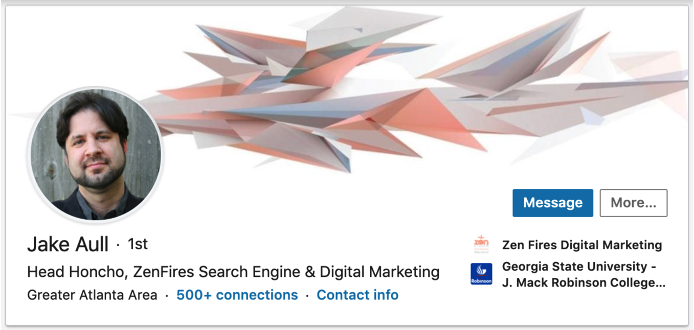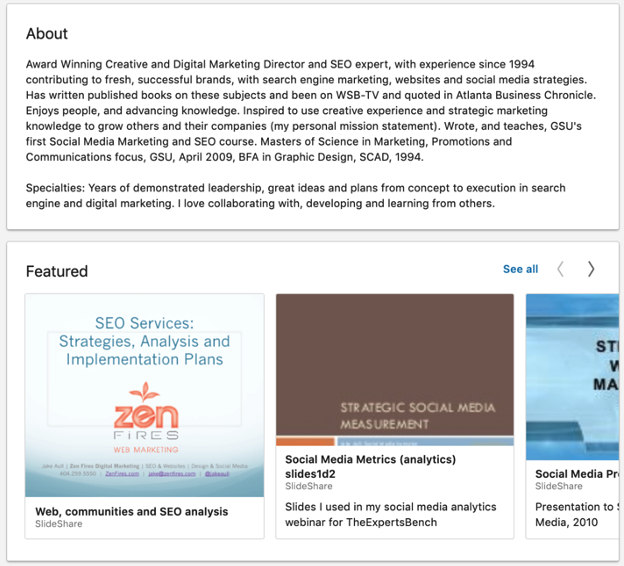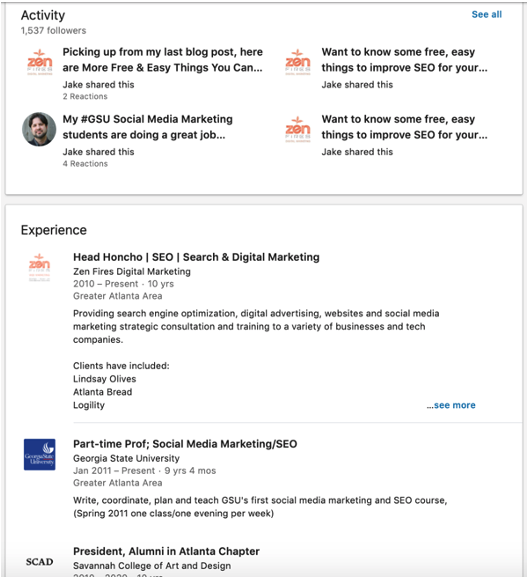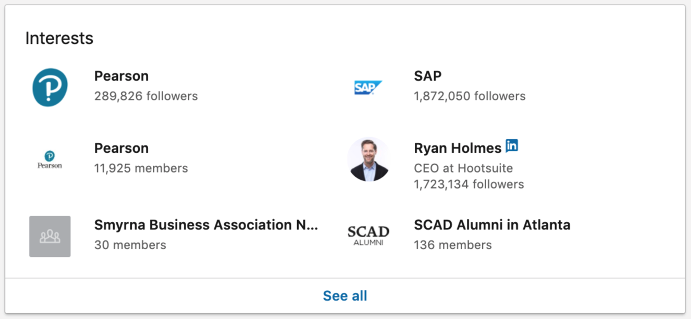Copyright ©2025 · ZenFires Digital Marketing
Over 90% of recruiters rely on LinkedIn (according to the Society of Human Resource Management). LinkedIn is a “rolodex” of your contacts, but it’s much more. Like with most social media, freshness and relevance of content are very important in LinkedIn. And you want to make sure you’ve written and/or researched a list of keywords to represent your brand and career goals – and integrate those into your profile messaging throughout the various sections. Not only will this help with users reading your LinkedIn profile, they will allow your profile to come up in search results for those specific terms and synonyms.
Your Headline is the first thing you see below the name and photo – and it’s 120 characters. Let it say what it is you do, who you help – and something about your personality (target this message – don’t just make it a generic job title). Anyone can put “Marketing Associate” on their headline – make it more niche, and powerful, such as “Proven B2C Marketing Agency Rising Manager.” Your headline could even be a CTA.

Have your summary address “why someone would want to work with you,” as well as your own personal USP; your differentiator. Your summary could be more of a historical biography of your jobs; a writeup representing your work goals, philosophies and personality; or a representation of your accomplishments and expertise.

This section in LinkedIn allows you to integrate “Posts, Articles, Links and Media” into your profile. Because LinkedIn owns SlideShare.net, you can integrate pdfs and slide decks into your LinkedIn profile – which is highly recommended because it can not only add visual graphics to your profile, but actual meaty content regarding your specialization. Input as many relevant, quality multimedia content samples as you can (as long as they align with your career goals and personal brand; white papers, videos, slide decks, etc.). LinkedIn Articles is also an option here for integration, as well as a function of LinkedIn for writing content. Use it! It pops out and represents you as a thought leader.
Bullets can be good for immediate, attention-grabbing summary points representing your activities in a specific role/employer. For longer, deeper description, paragraph format can work. The question is: “What information would a hirer or prospect most want to know about my role and expertise at an employer?” Depending on how much info is available on LinkedIn about the employers, you may want to provide more info about them as well.

Volunteer Experience, Accomplishments and Recommendations should all be as full as you can make them. Treat the Volunteer Experience section like you would the work experience section. Accomplishments can include your school courses, honors & awards, projects, languages you speak, and more.
The Featured Skills section should be accurate, relevant (to your brand and your career goals) – full but not overblown.
Contact info should be as full (and your profile should be as public) as you are comfortable making it. Look at it this way – how easily do you want hirers to be able to reach you?
Interests should include your membership to LinkedIn Groups which, again, are consistent with your brand and career goals.

Get as many connections as you can, but don’t troll, spam or stalk people. Customize your messages and invites to the recipients – if you met them at a specific industry event, say so in your message. Tone of voice in content is very important (both in your messages and your profile write-up); your LinkedIn profile is not just a resume. But keep in mind the tone of voice for someone in the banking industry would should be very different than someone in a creative agency. Again – your tone of voice should fit your brand and career goals.
Sources & more reading:
https://blog.simplemachinesmarketing.com/examples-of-linkedin-profiles-that-follow-best-practices
https://money.com/linkedin-profile-tips-resume/
https://business.linkedin.com/talent-solutions/blog/linkedin-best-practices/2016/7-linkedin-profile-summaries-that-we-love-and-how-to-boost-your-own
Copyright ©2025 · ZenFires Digital Marketing